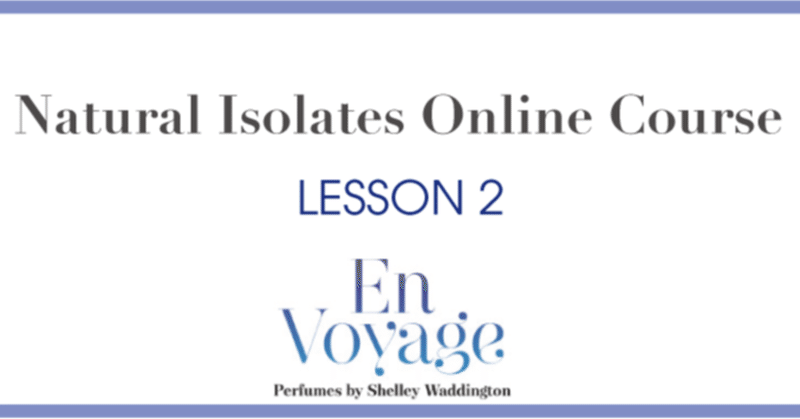
Natural Isolates Online Course: Lesson 2
レッスン2のテーマは、
Production methods, resources and market factorsです。
関連用語の意味を調べるようにとの宿題が出ました。
英語の回答は添削してもらいましたが、日本語の理解が正確とは言えません。良い文献をご存知の方がいたら教えていただきたいです。
Assignment:
A basic understanding of the following terms is important to being able to understand the concepts that will be discussed in this lesson.
Take the time to use Google, Wikipedia, and any other available resources to find the definitions. This process will serve as an aid to a deeper and more personalized understanding of each definition and concept. Space has been left to fill in the definitions. Then you can send it back to me.
■ Deterpenation: テルペンレス化・脱テルペン化
to remove terpenes, usually to be performed it in order to increase the storage time of citrus oils.
■ Fractionation: (混合物を) 分別蒸留する、分留する
a separation process in which a certain quantity of a mixture is divided into a number of smaller quantities.
天然(合成)香料を蒸留により成分を分離して得ること。
■ Fusel oil: フーゼル油
a mixture of several alcohols (chiefly amyl alcohol) produced as a by-product of alcoholic fermentation.
アルコールと脂肪酸を混ぜ、発酵させ、ろ過する。人体に有害。ラッカー、ニスの溶剤に用いる。
■ Preparative chromatography: 分取クロマトグラフィー
a technique used for separating the ingredients of complex mixtures. It is used in the pharmaceutical industry to purify molecules by cleaning them of their impurities.
成分の定性、定量を主目的にするのではなく、成分を抜き出し、成分の実態を把握するために行うクロマトグラフィー
■ Re-distillation: 再蒸留
further distillation; purification of liquid through many distillations.
■ Rectification: 精留
a method for separating liquid mixtures based on the division of the components of the mixture into liquid and vapor phases.
分留により(精油などの)不純物、または不要成分を除去すること。
<Shelleyからの追加情報>
Good general information. Here is a little more info that is more specific to oils that are used in perfuming:
Rectification is a form of fractioning, coarser than fractional distillation, that separates the odor molecules of an essential oil that have very different boiling temperatures. The odorant compounds of the essential oil pass one after the other into the distillation column and are collected separately, after condensation. Molecules with no olfactory value are then removed from the essential oil, while the desired molecules are concentrated. Our Chinese eucalyptus globulus 80% essential oil (high cineole content) and Chinese spearmint 80% (high carvone content) are rectified essential oils. (from Albert Veille website - recommend this site for both beauty and education.)
■ Reverse osmosis: 逆浸透膜
a technique used in desalination and waste-water treatment; pressure is applied to the surface of a saline (or waste) solution, forcing pure water to pass from the solution through a membrane (hollow fibers of cellulose acetate or nylon) that will not pass sodium or chloride ions.
ろ過膜の一種であり、水を通しイオンや塩類など水以外の不純物は透過しない性質を持つ膜のこと。
<Shelleyからの追加情報>
More specific use pertaining to plant oil for use in perfumery:
■ Solvent extraction: 溶剤抽出
the separation of materials of different chemical types and solubilities by selective solvent action.
■ Steam distillation: 水蒸気蒸留
a distillation in which vaporization of the volatile constituents of a liquid mixture takes place at a lower temperature by the introduction of steam directly into the charge.
蒸留釜の中に入れないで、植物原料を釜内に設けられた数段の格子に積み重ね、ボイラーよりパイプで送られた水蒸気を釜の底部から吹き込んで蒸留する方法で、工業的に最も広く用いられる。
■ Terpene: テルペン
C10H16 A moderately toxic, flammable, unsaturated hydrocarbon liquid found in essential oils and plant oleoresins.
強い匂いがする化学物質の一種で、一部の植物、特に球果をもつ木に含まれている。いくつかのエッセンシャルオイル(植物から抽出された芳香成分を含んだ液体)に含まれている。
■ Terpeneless: テルペンレス
having no terpenes
分留などの方法で、テルペンを除去した
■ Vacuum distillation: 減圧蒸留
distillation in which the liquid distilled is enclosed at a low pressure in order to reduce its boiling point
■ Water distillation:
a water treatment method that produces contaminant-free water by converting water into vapor before condensing it and returning it to a liquid state.
採油植物原料が沸湯に直接接触している蒸留法で、原料は比重の大小により、湯面に浮かぶか沈んでいる。水は蒸気ジャケット、蒸気コイルなどで加熱するが、植物採取現地で蒸留する場合は、直火を用いることもある。ローズ、オレンジフラワーなどのように、蒸気に触れると固塊状になって採油に不都合な原料に適する。
出典:
香りの事典 仏英和 フレグランス ジャーナル社
◆◆◆
【要点メモ】
■ Methods of Production 天然単離香料の製造方法
1. Distillation 蒸留
再蒸留(Re-distillation)と精留(Rectification )がシンプルな方法。
精留は、蒸留の最初と最後の部分を取り除くことにより不純物や不要成分を除去する。
もう一つ方法としてテルペンの除去がある。技術的には全てのエッセンシャルオイルで可能であるが、商業的にはベルガモットやゼラニウム、ラベンダー、ローズマリーなど一部でしか行われていない。テルペンを取り除くことで香りが強化、洗練される。
反対に、テルペンを除去すると主要な香り成分がなくなるものもある。例えば、テルペンレスレモンオイルはほぼ100%citral。テルペンレスサンダルウッドはほぼ100%santalol。また、テルペンレスベチバーはほぼ100%vetiverolとなる。
2. Vacuum distillation 減圧蒸留
真空ポンプによって空気が除去された装置で行われる。通常の大気圧で沸点以下の熱に不安定な多くの液体は、分解せずに蒸留できる。
リナロールは、ローズウッドオイルから減圧蒸留によって得られる。
3. Freezing 晶析法
天然精油に含まれる結晶成分を冷凍することにより析出させて単一成分を得る方法。
phellandrene, safrole, santalol, vetiverol, camphor, menthol, thymol, eucalyptolなどがこの方法で得られる。
これらは合成香料としても大規模に生産されているが、依然として天然原料に頼ることが多い。
特にeucalyptol (cineole)は、エッセンシャルオイルから分離することによってのみ製造される。
4. Extraction From Waste Stream Products 廃棄物からの抽出
最も多く使用されているのは、ウイスキーなどの酒類や燃料エタノールの蒸留の副産物であるフーゼル油。主成分はisoamyl アルコールで、l-butanol や l-hexanolが続く。
つづく
この記事が気に入ったらサポートをしてみませんか?
